Best Time to Visit Iceland: Summer vs. Winter
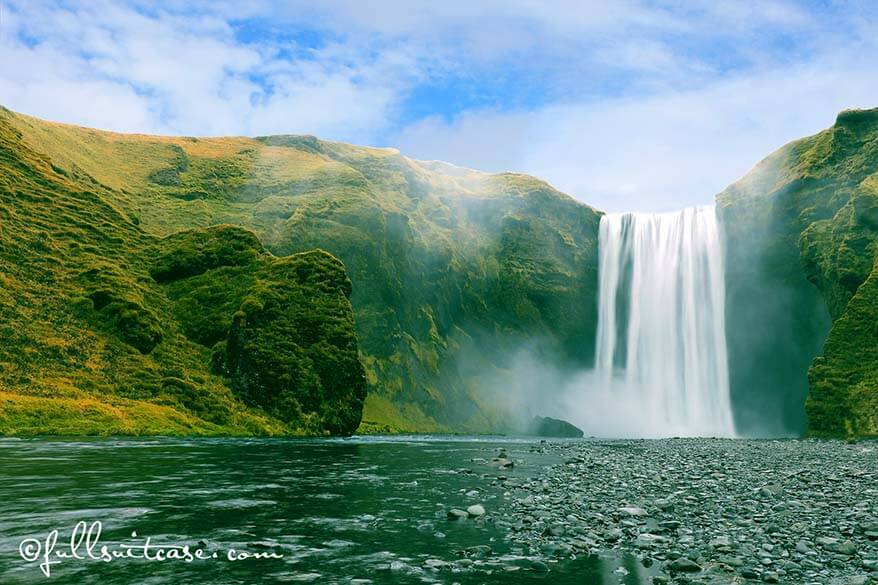
This site contains affiliate links, which means that we may earn a small commission, at no cost to you, for qualifying purchases. It supports the work that goes into keeping this content free. Thanks for reading! More info: Privacy Policy.
Wondering when is the best time to go to Iceland and what to expect in every season? This guide should give you a better idea of what it’s like to visit Iceland in different seasons and to decide when to travel to Iceland. Find out!
Iceland is one of those places that you can visit all year round. It’s rough and beautiful at the same time, it’s unique, and it will definitely surprise you. First-time travelers often play it safe and travel to Iceland in the summer. However, recently more and more people discover this amazing country in winter. But when to visit Iceland?
The best time to travel to Iceland depends on what you expect from your trip. Below in this article, we cover the main advantages and disadvantages of visiting Iceland in summer vs winter.
If you are worried about the weather in Iceland, all I can say is don’t be, because there is simply nothing you can do about it. Of course, statistically speaking, you will have warmer and drier weather in summer than in winter, but it doesn’t mean that it will actually be that way. It wasn’t when we traveled…
READ ALSO: Best Places to See in Iceland
My personal experience in Iceland in summer, in autumn, and in winter
I visited Iceland several times: in May – June, in July, in August, in September, and in November. Below, you can read about my experience on each of these visits.
Further below, you can find a comparison of experiences and things that you can do in Iceland in summer versus winter. Based on what you want to see and do, this should help you to decide on when to visit Iceland. Read on!
Iceland in May – June
Our first trip to Iceland dates from long ago – many years before it became popular. The day we arrived in Akureyri on the 31st of May 2006, we found ourselves in the middle of a terrible snowstorm. Our plane had difficulties landing, the roads were icy and some sections of the main road around the island were closed, the streets were covered with snow, and practically everything was closed.
The rental car agency upgraded us to an SUV as they didn’t think it was safe to drive with a regular car. Despite this, our car ended up in a ditch on the second day of the trip…
Luckily, nobody got hurt and there was no damage to the car. We were also lucky that a friendly Icelander happened to be passing by within just a few minutes on a completely deserted road, and that he had all the equipment to pull our car back on the road with his monster-size 4×4.
Just two days later all the snow was gone and we even had one sunny day with temperatures reaching 20°C (68°F) for just a short moment. By the end of our vacation, we were wearing our winter jackets again.
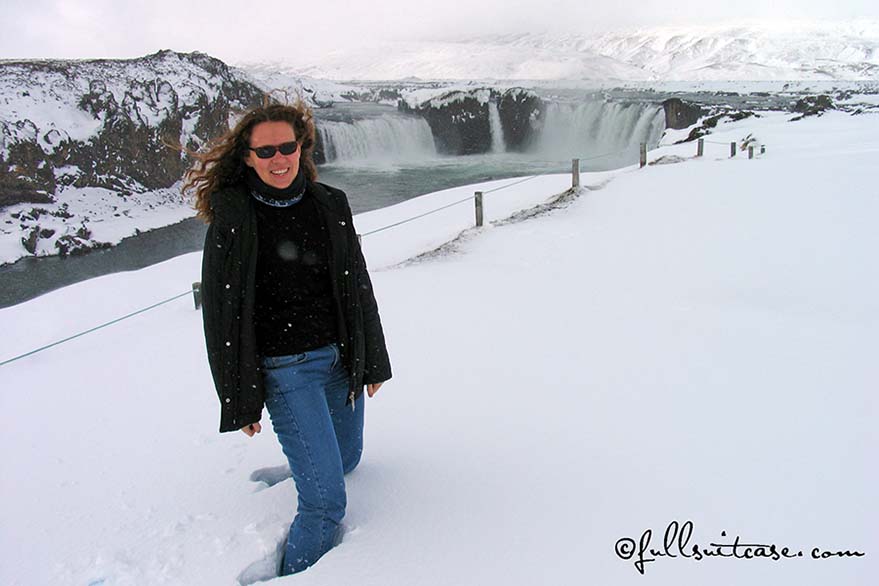
Iceland in November
So when I booked my winter trip to Iceland in November many years later, I was prepared for everything.
It was cold, much colder than expected, but it was dry! There was some ice on the roads near Reykjavik on the first day, but we haven’t seen snow or rain for the rest of the week.
We were told that it was highly unusual to have 7 dry days in a row in November. Just as it was highly unusual to have knee-high snow in June…
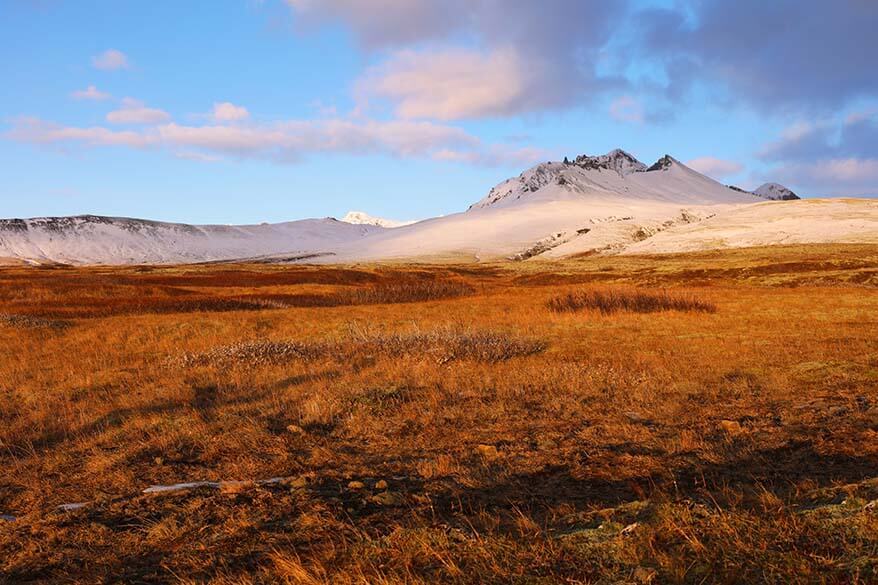
Iceland in September
My third time in Iceland was in September, for an amazing Icelandic highlands trip. We had beautiful sunny days, but also some rain and wind. One moment we would be walking around in sweaters and an hour later we would need a winter jacket… But in general, it was sunny – the best weather you could hope for in Iceland.
We were told by the locals that they didn’t have as much sun during the whole summer this year as we did in September…
READ ALSO: Iceland in September
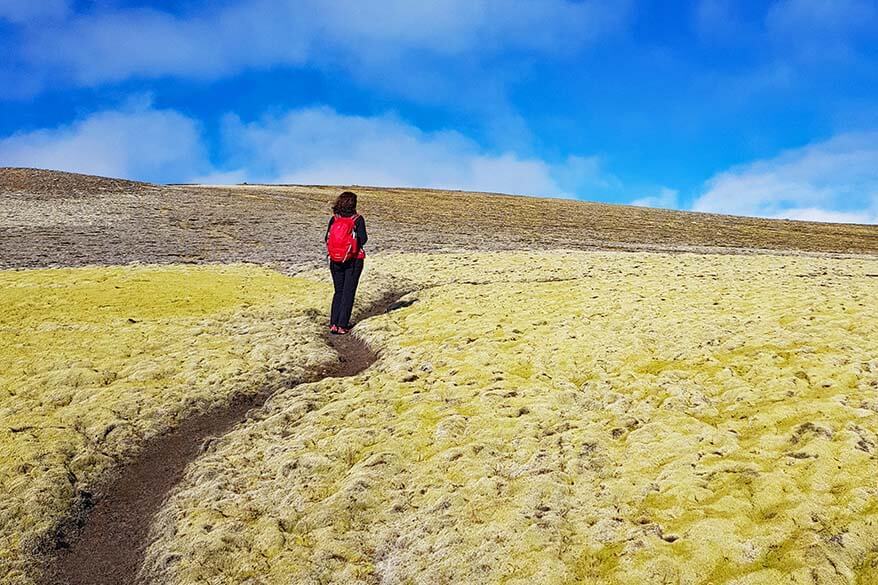
Iceland in July
Recently I also had a chance to quickly visit Iceland in July. It was just a short stopover when traveling to and also back from Greenland. This was in the summer of 2019, which was probably one of the nicest, sunniest, and warmest summers Iceland ever had.
The weather was amazing in Iceland in July and we were walking around Reykjavik in t-shirts. I even saw some people wearing shorts and sandals – an exceptionally rare sight in Iceland.
Our Icelandic friends invited us for dinner at their house where a lot of their friends were gathered for a garden party. This was in the middle of the week and most people came straight from work. They told us that the weather is so exceptional that you have to take advantage of it while it lasts. ‘Use the weather’ they told us. Who cares that you have to go back to work the next morning…
That being said, even this exceptionally sunny and warm Icelandic summer meant that maximum temperatures were around 15-18°C (59-64 F), with just a few days of temperatures over 20°C (68 F).
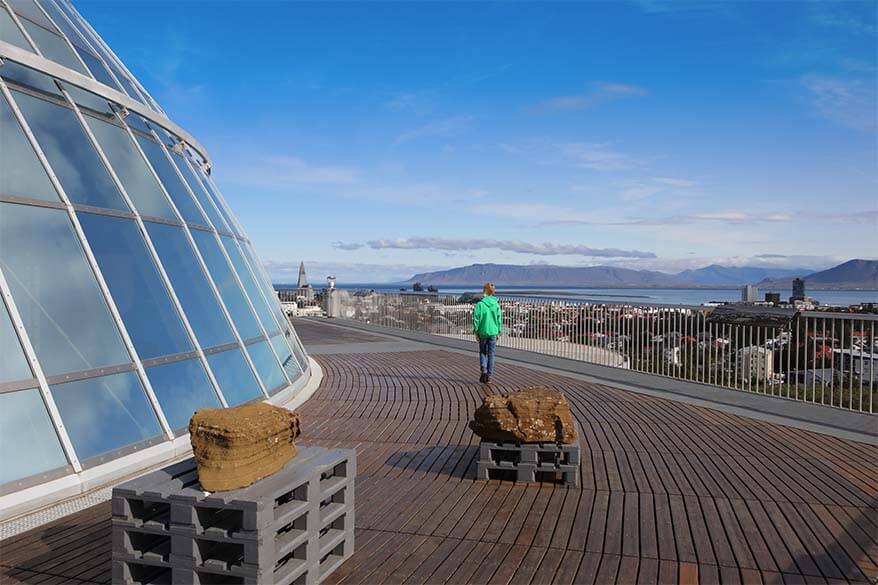
Iceland in August
Our most recent trip to Iceland dates from the second half of August. This was the same exceptionally dry and warm summer of 2019. This time we were traveling around West and North Iceland for 10 days.
We started with incredibly beautiful weather on Snaefellsnes Peninsula and had amazing sunny weather in the Westfjords and Hvitserkur and Siglufjordur in the North of Iceland. By the time we got to the Myvatn area, the sun was gone, but it was still dry and warm enough with just a sweater.
However, a week later, the weather changed and by the time we visited the highlands, it was freezing and we were experiencing some of the worst wind and horizontal rain. We could hardly get out of the car and had to also change our travel plans one day – we visited Haifoss instead of Landmannalaugar.
By the time we got back to the Reykjanes Peninsula at the end of the trip, we had typical Icelandic weather with sun, rain, and everything in between on the same day.
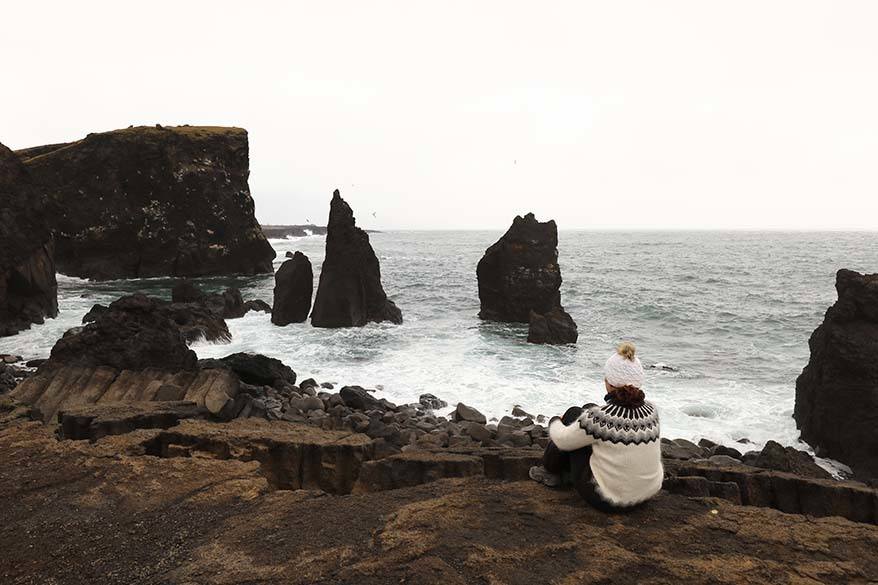
If there is one conclusion to be made from my experience visiting Iceland in various seasons, is that the weather is always unpredictable in Iceland. On top of that, it changes quickly so you should expect the worst and hope for the best, and be flexible in case you need to change your plans.
Here you can find our packing tips for Iceland for the winter months and here – Iceland packing tips for the summer. Travel well prepared and you will love Iceland in any season and any weather!
Of course, traveling in summer or in winter will in principle give you completely different experiences. Some things you will be able to see and do all year long, some others are season-specific. Below, you can read a summary of the main benefits of visiting Iceland in each season to help you decide when is the best time for you to travel to Iceland.
Just to be clear, by summer I mean June through August, winter – October through April. May and September can be a bit of both. Remember that you can have summer AND winter in one day in any season in Iceland.
Activities you can do and places you can visit in Iceland all year
The following places and activities in Iceland are easy to visit the whole year round:
- Reykjavik (don’t miss Perlan Museum), the Golden Circle (Thingvellir National Park, Gullfoss, Geysir), and the Southern coast of Iceland, all the way up to Jökulsárlón, can be visited all year. You can also easily visit all these places with organized tours from Reykjavik in any season.
- Natural baths such as Blue Lagoon, Sky Lagoon, and many others, as well as countless swimming pools, are all accessible all year round.
- Glacier hiking, some snowmobile tours, horseback riding – these and some other activities you can do in all seasons. There is even a natural ice cave – Katla – that you can visit the whole year-round (all others – only in winter).
- Iceland is also a real photographer’s paradise in any season. If you love travel photography, Iceland will give you so many unique opportunities for great pictures.
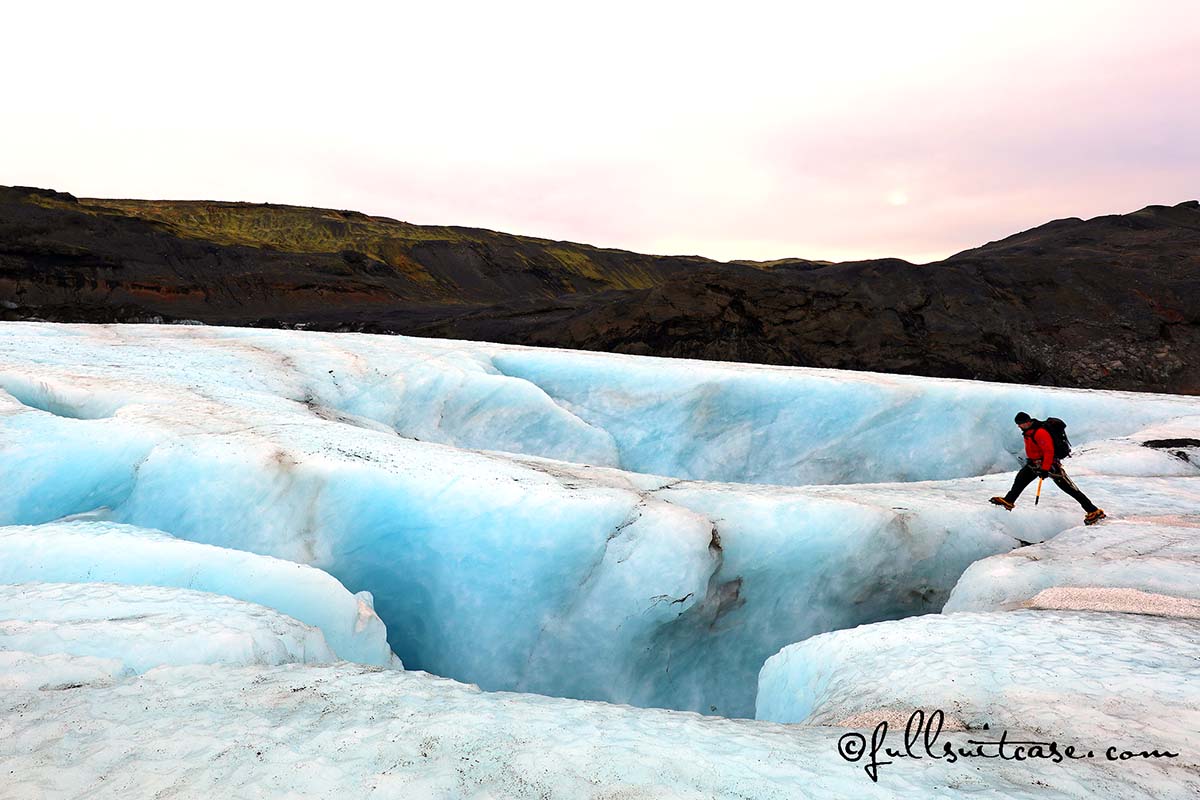
Advantages of visiting Iceland in summer
Here are a couple of main advantages of visiting Iceland in summer:
- The days are long in Iceland in summer. In fact, they are endless, so you can do much more sightseeing.
- It is warmer and drier.
- You can see some wildlife. Theoretically speaking, you can see whales in any season, but the chances are much higher in summer. Puffins and most other birds can only be seen in summer months.
- Roads are better accessible and you may get to places that are completely out of reach in winter.
- Fully exploring the highlands in Iceland is only possible in summer.
- Many waterfalls are better accessible in summer. In winter you often have to admire them from a safe distance as it’s just too slippery to get closer.
- The northern part of the island can be visited more easily in the summer months than in winter. The same counts for the Westfjords; places like Dynjandi or Raudisandur are best visited in the summer months.
- You can do the complete Ring Road of Iceland without having to worry about driving conditions.
- Camping is certainly more pleasant in summer. Here you can find more information about camping in Iceland.
- Some hiking can be done all year, but you will have many more possibilities in summer.
- Most museums outside of Reykjavík are only open during the high season.
Here you can find a few examples of activities, excursions, and day trips you can do in Iceland in summer.
READ ALSO: Iceland 7 Days Itinerary
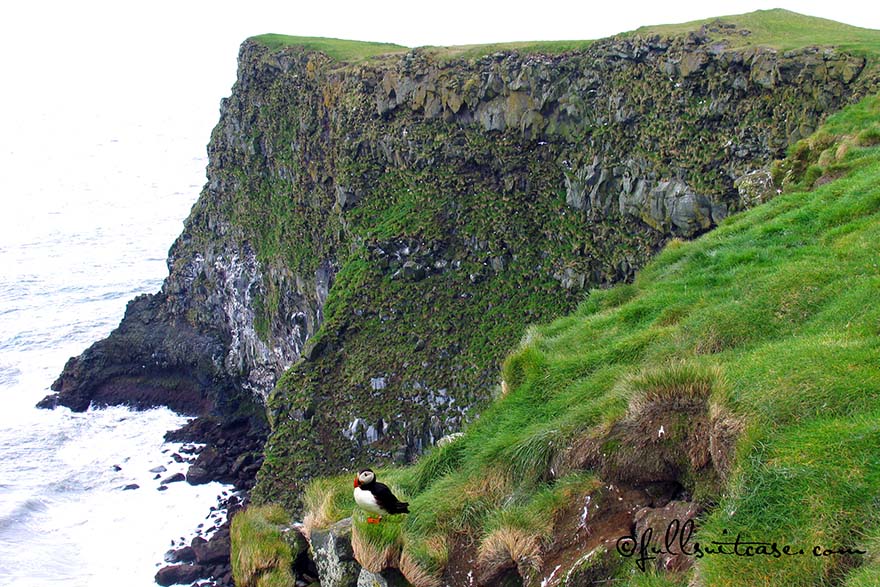
Advantages of visiting Iceland in winter
Here are the main advantages of traveling to Iceland in winter:
- Winter has the most beautiful light for photography. The days are shorter and your sightseeing time is limited, but the light is just amazing as the sun is so low on the horizon that it looks like sunset all day long.
- Northern lights. The best time to see Aurora Borealis in Iceland is from September through the beginning of April. In fact, there are only three factors that determine if you get to see the auroras: it has to be dark, the sky has to be clear, and it helps if aurora activity is high. Make sure you check aurora forecast websites to help you ‘hunt’ Northern lights. Even if the activity is low, you can usually see some auroras on a clear night, and a level 4 or 5 aurora display can be just dazzling. Take a look at our beginners’ guide to Northern Lights photography.
- You may witness the most beautiful frozen nature creations in winter. Frozen waterfalls are just incredible!
- The most impressive natural ice caves (around Skaftafell or near Jokulsarlon) can only be visited in the coldest winter months. They are under the water for the rest of the year. Here you can find more inspiration: bucket list-worthy winter experiences in Iceland.
- Skiing, snowmobiling, and ice fishing are extremely popular in the winter months. Although, as already mentioned, some snowmobile tours run the whole year-round.
- There are fewer tourists in winter so it is less busy at the attractions.
- Prices of accommodation and car rental are lower as well.
TIP: If you are thinking of visiting Iceland in winter, take a look at our winter itinerary for Iceland. If you don’t feel like driving in Iceland in winter, check this hand-picked selection of the best tours and winter day trips in Iceland departing from Reykjavik.
READ ALSO: Tips for Visiting Iceland in Winter
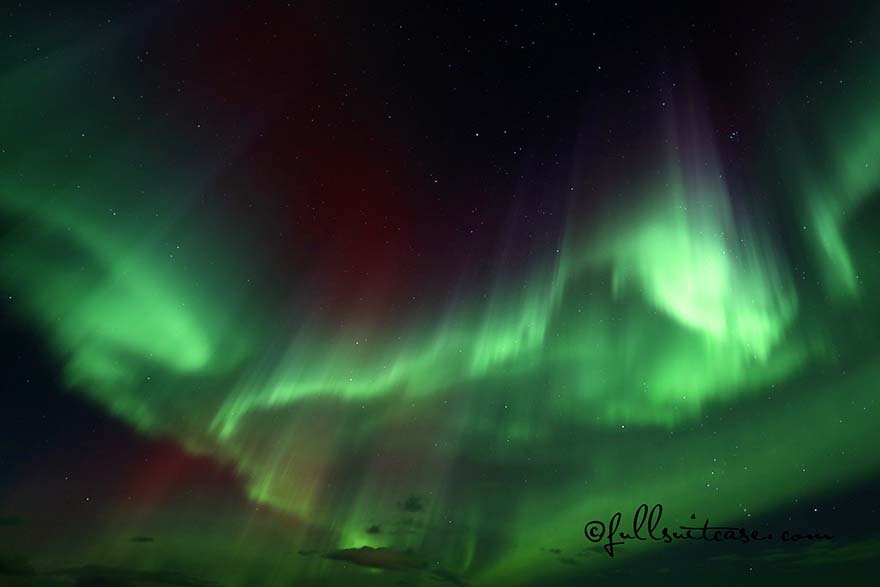

TIP: If you are still not sure when is the best time to visit Iceland, I might just have a perfect answer for you. I recommend visiting Iceland in September, especially if it’s your first trip. Why? You can read more about it here: good reasons to travel to Iceland in September.
One thing I know for sure – no matter which season you choose, you will love Iceland!
More tips for your trip to Iceland:
- Airport transfers: How to Get to Reykjavik from KEF Airport
- Budget: How Expensive is Iceland (& How to Save Money)
- Packing: What to Wear in Iceland in Winter and What to Pack for Iceland in Summer
- Tours: Best Tours and Day Trips in Iceland
- Accommodation: Where to Stay in Iceland and Where to Stay in Reykjavik
- Reykjavik: 1 Day in Reykjavik and Best Half Day Tours from Reykjavik and Perlan Museum
- Check our Iceland travel guide for even more inspiration and tips
How to plan a road trip in Iceland:
- Itinerary suggestions: Iceland Itinerary
- South Coast: 4 Days in Iceland – Best South Coast Itinerary
- South & West: Iceland 7 Days Trip Itinerary
- West, North & the Highlands: Iceland 10 Days Itinerary
- Ring Road: Iceland Ring Road Itinerary
If you found this post helpful, don’t forget to bookmark it and share it with your friends. Are you on Pinterest? Pin this image!
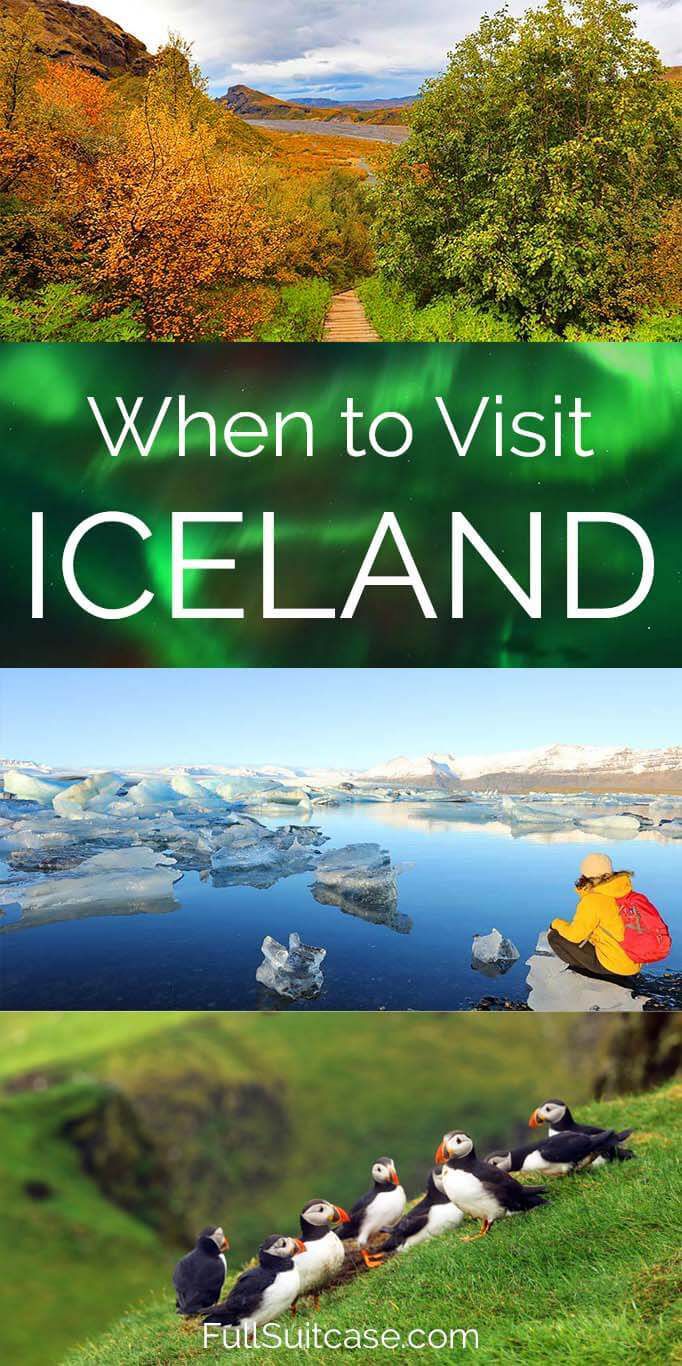

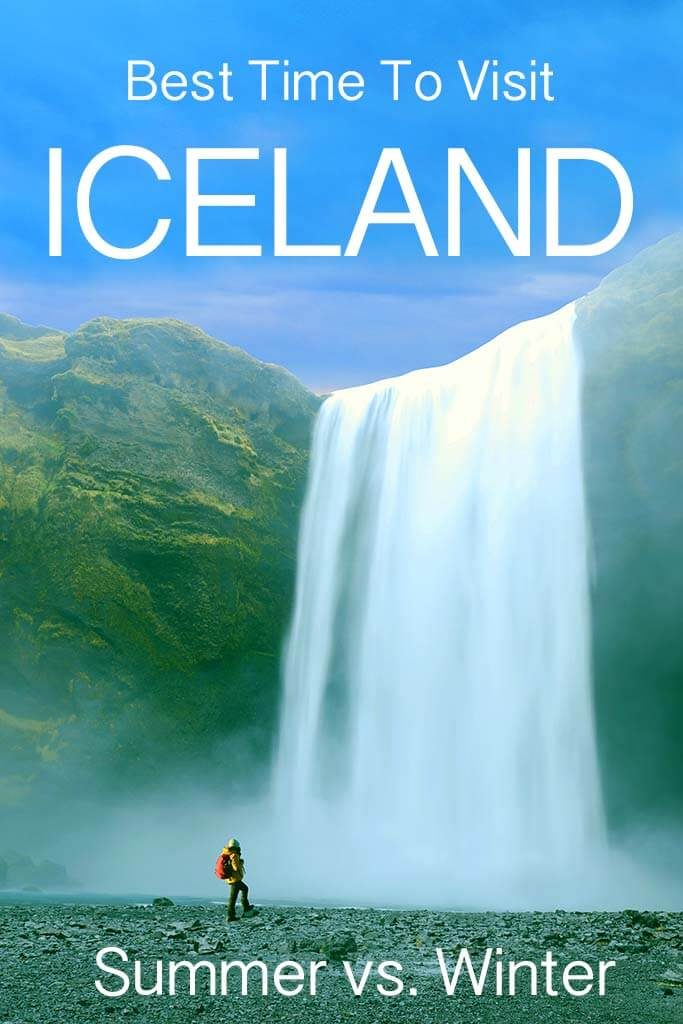

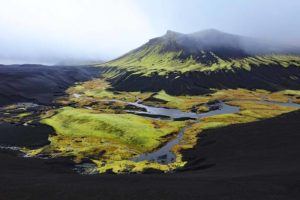
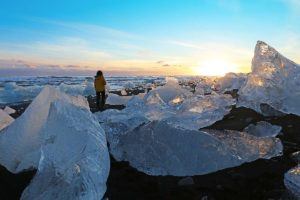
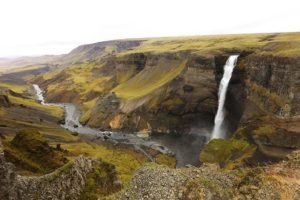
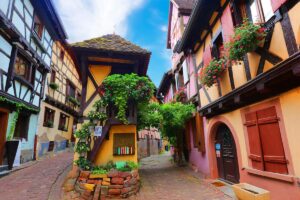
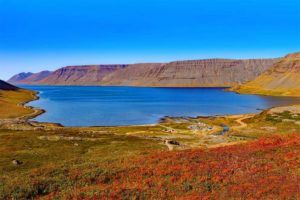
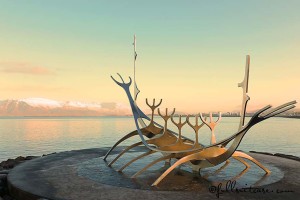
Thank you Jurga,
We are hopeful we will be allowed to travel soon but understand the virus is everywhere.
Much Gratitude,
Aimee
Aloha Jurga,
I appreciate all your helpful information and really enjoy your photos! Much Gratitude.
We live on the Big Island of Hawaii and very much want to visit Iceland. We are both already vaccinated but it does not look like we can enter the country due to our American passports. Do you know if or when we will be able to enter?
Hi Aimee, the rules change all the time, and you can find all the latest updates on the official website. Also Icelandair does a good job at keeping their website up-to-date with any new developments.
From what I see, people who have been vaccinated and can present an official certificate, are already exempt from quarantine. This has literally just changed a few days ago (Feb 19, 2021). However, since Schengen borders are still closed to Americans, this only applies to people traveling from within Europe. So Americans aren’t allowed to visit just yet, no matter if vaccinated. Nobody knows when this will change and it will probably be a decision of the Schengen zone and not Iceland alone. If you are not sure, it never harms to simply contact the embassy and ask. However – once again – the rules change all the time, so even if it’s not allowed today, it’s very likely it will be possible a few months later.
I know that Iceland is very eager to reopen to tourists so they won’t keep the borders shut any longer than necessary. In general, Europe is hoping to ease things up by May and, hopefully, we’ll be able to travel a bit more this summer. But nobody is giving any certainty about summer travel within Europe, let alone about trans-Atlantic travel for leisure yet.
So if you already start planning, I wouldn’t plan anything for the first months, but rather for the fall/ winter, maybe late summer. But nobody will be able to give you 100% certainty about the reopening at this moment.
Nice blog. I think summer is the best time to visit Iceland. Because in winter months we can face several problems like, Driving in winter can be a little tricky, snow falls around them so, and it could be difficult to drive. I have visited many times in Iceland. But in September is the best time to visit Iceland. Last September I had visited Iceland with my sister to see the mesmerizing view of northern light.
Thanks for sharing your experience, Sara. Indeed, driving in Iceland in winter is not for everyone and you never really know how it will be.
I have to agree with you that September is an amazing time to visit Iceland (as you can read in my Iceland in September article), but every season has something different and unique. Thus this article – to let people decide when to visit Iceland, based on their interests and expectations.
Hi Jurga,
Firstly, I would like to thank you for writing such an elaborate blog. It really helped in planning our trip. We are going there in January 2019. Is it absolutely necessary to get a 4×4 Car if we are planning a self drive 9 day road trip.
Hello, in principle it’s not necessary to rent a 4WD for Iceland if you stay on the Ring Road. However, in winter, I would at least rent an SUV – a car that is higher from the ground and more stable on the roads. However, sometimes a big SUV costs more to rent than a 4WD, so it really depends on your personal preferences as well. You never know how the roads or the driving conditions will be, in any case don’t rent the smallest car in Iceland winter.
Here you can find some real-life stories about driving in Iceland in winter – you’ll see that it’s impossible to predict.
I have visited this beautiful and heart touching place in winter. Now I am planning to go there in summer. I am so excited. Thanks for the post, it gave me a better idea what to expect.
If you liked Iceland in winter, you’ll love it in summer as well. Just prepare for the ever-changing weather ;).
Thanks for your beautiful blog. We are traveling next month to Iceland. Do you know where I can call to set up a circle tour, either private or a group? Other wise thinking of renting a car. Is it fairly easy to navigate our way around?
thanks,
Sara
Hi Sara, in summer you can easily visit Iceland on your own, so renting a car is probably the best option if you have a few days. For tours, please check here for some hand-picked suggestions: Best Tours in Iceland.
Hope this helps. Enjoy your trip.
Hi Jurga, we are going to Iceland in 2 weeks(6/25) for 8 days with my husband and 2 boys (12 &14 yrs). We Will stay in Reykjavik and we are renting a car. Do you think that we need to book some tours, if yes, itis better to book from here(US) or can we drive and explore by ourselfs? Any top places that we cannot miss? Do we have to get their currency or credit cards would be fine? By the way love your blog! Thank you.
Hi Claudia, if you have a car definitely go and explore on your own. It’s just that Reykjavik really isn’t the best base if you have so much time in Iceland… Lots of driving up and down for no reason, so if in any way possible I’d say try to change your accommodations, it will be easier to see places that are further away. Ideally you’d spend a few days along the South Coast.
As for what to see, check this post some of my favourite places in Iceland. Here you can find some sample itineraries. This winter itinerary can of course be done in summer in less time and every place along the South coast is really worth seeing. Main highlights in the South are: the Golden Circle, the waterfalls along the South Coast, Jokulsarlon glacier lagoon. Also, you could drive up to Snæfellsnes Peninsula as well.
As for tours, some are really worth it, depending on your interests. For example, puffin or whale watching, horse riding, glacier hiking, silfra snorkelling… A visit to a geothermal pool is also a must in Iceland. You can find all these suggestions here: best summer tours in Iceland. If you like hiking, Landmannalaugar trail inland might really be worth doing. It’s not easy to get there unless you have a 4WD and off-road driving experience, therefore probably better go with a tour.
Cash is not really necessary in Iceland, you can use credit cards pretty much everywhere (best take VISA or MasterCard; AMEX isn’t very widely accepted in Iceland or anywhere else in Europe for that matter). I heard someone say that some parking meters in Reykjavik didn’t take credit cards, but that’s really the only time I heard that someone would need cash in Iceland.
Hope this helps. Have a great trip!
I’m from Boston;check it out:Boston in the winter is colder than Reykjavik,and central Maine(where I once lived is much colder than Akureyri! Iceland is influenced by the Gulf Stream;the U.S. is not!
And yes Iceland is an amazing place to visit-I loved it!
Amazing pictures! Do you have any tips for photographing northern lights?
It’s funny – you’re the third person who asked this question in less than a week, Simon. I guess it’ the season for watching and photographing auroras. I do have some tips, but it’s a bit too long to explain here. Working on a post in regards to Northern Lights photography, so please stay tuned.
And here it is. Hot off the press 🙂 Tips for photographing Northern Lights.
Hi! Iceland sounds amazing. I’ve been trying to book for a while and finally I have booked for next April. Do you think is good time to see the aurora? Thanks
They say that September through mid-April is the best time for auroras in Iceland, so you might be just in time, Andrea! My suggestion would be to follow the aurora forecast (hourly) and go outside every night.
YAY! I’m going in winter and you make it sound so magical. I can’t wait. Great tips 🙂
Winter is great. I loved Iceland in winter – it is magical indeed. Just dress warm!
Wow. I can see why this is such a popular post. Well written, informative, excellent photos. Loved everything about it. Iceland is firmly on my bucket list!
Thanks for sharing! Gonna check out your other content 🙂
Thank you so much for your feedback, Bryony! I aim to provide my readers with lots of practical information on every destination I write about, to help them make the most of their trips. So this is a really big compliment to me. Appreciate it!
Those Aurora shots….wow! I visited Iceland in March. The days were starting to get longer but there was still lots of snow around, I loved it 🙂
I bet you there was snow in March, Kiara. As I said, we had plenty of snow in June! 🙂
Incredible photos! There seem to be great reasons to go in any season….for me thought it would have to be winter to see those Northern Lights! Something I absolutely must do in my lifetime 🙂
Thanks, Leah! Northern Lights was the main reason behind my decision to go back to Iceland in winter. We were lucky to be able to see some amazing auroras, but I liked the rest of the trip just as much. We hardly ever go back to the same place twice – I’d gladly make an exception for Iceland again!
That thick layer of snow for your first trip is crazy! I’m still dreaming about Iceland, had thought of doing a solo trip but driving + left-hand driving are really what put me off. The next is to consider joining tour groups like you mentioned. Thanks for recommending!
You shouldn’t worry about driving in Iceland, Kristine! Outside Reykjavik there’s hardly any traffic at all. But indeed, organised group tours are the perfect way to see Iceland in summer. We had very icy road one day last November – couldn’t even walk on it without slipping, but our experienced local guide/driver had no problems at all. That day I was so happy I didn’t have to drive.
I have only been to Iceland once in the winter, and even though we experienced several snowstorms while we were there, it is really not that bad with the right clothes. Also agree that photography is on point in the winter because of the lighting. If you don’t like the weather in Iceland, just wait 5 minutes and check again!
Yes indeed, Diana. You cannot control the weather, but with the right clothing you can enjoy pretty much any trip.
If I understand it well you had been to Iceland in summer and in winter. If you were to choose one of the two – when would you go? We would love to visit Iceland, but cannot decide when.
It’s a difficult one, Sarah. I would try to focus on activities you really want to do and then see which season is the best for that. We loved both our trips to Iceland, but if I had to pick just one, it would be the one in November because it was more special. We saw things we hadn’t seen anywhere else before: Northern Lights, frozen waterfalls and other frozen water creations at the glacier lakes, icebergs on the beach in Jokulsarlon… Just make sure you’re dressed for the cold and the rain – you’ll need very warm waterproof clothing in Iceland in winter (check my Iceland winter packing essentials post). Hope this helps.
We’re going to Iceland in October. Do you know if it’s a good time to see the whales?
I think the best season to see the whales in Iceland is from April to September, but I wouldn’t get discouraged by that. They do whale watching tours all year round and have told us that there are whales around even in winter months. It’s a matter of luck I suppose. I’d definitely give it a try if it’s not too cold and too rainy when you are there.